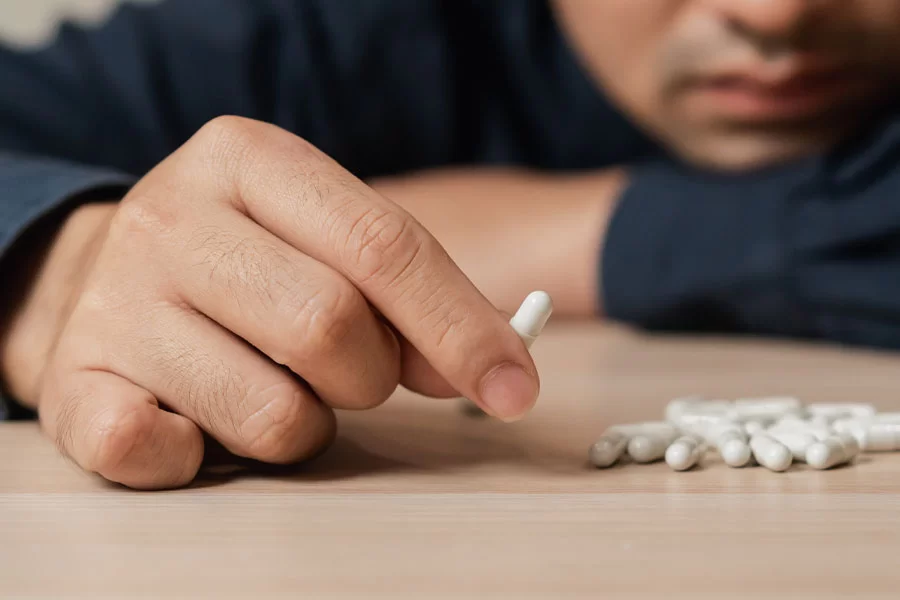Post-Traumatic Stress Disorder Rehabilitation, often abbreviated as PTSD rehabilitation, plays a crucial role in helping individuals recover from the severe emotional and psychological effects of trauma. For people struggling with PTSD, the journey to healing involves structured care and specialized support. Sukino Healthcare recognizes the profound impact PTSD can have on daily life and the necessity of comprehensive, holistic rehabilitation. From therapy sessions to support groups and medication management, PTSD rehabilitation provides a multi-layered approach tailored to ease the burden of symptoms, help regain control over one’s life, and ultimately restore emotional resilience. Here, we’ll explore the different aspects of PTSD rehabilitation and how it empowers individuals to reclaim their well-being.
What is Post-Traumatic Stress Disorder?
Post-Traumatic Stress Disorder (PTSD) is a mental health condition triggered by experiencing or witnessing a traumatic event, such as a natural disaster, accident, combat exposure, or any other life-threatening situation. PTSD symptoms can range from flashbacks and severe anxiety to intrusive thoughts and nightmares. Individuals with PTSD may also experience emotional numbness, irritability, and difficulty functioning in daily life.
Understanding PTSD is essential to addressing it effectively. A tailored rehabilitation approach can help break the cycle of trauma, enabling people to process and heal from their experiences.
The Goals of Post-Traumatic Stress Disorder Rehabilitation
The primary objective of Post-Traumatic Stress Disorder rehabilitation is to equip individuals with the tools and strategies they need to manage symptoms, build coping mechanisms, and prevent recurrence. Some of the key goals include:
- Symptom Reduction
Rehabilitation seeks to minimize intrusive symptoms like flashbacks, panic attacks, and hypervigilance, providing relief from the intense stress and discomfort caused by PTSD. - Emotional Regulation
Individuals learn techniques to help control emotional responses, reduce irritability, and manage impulsive reactions often linked to trauma-related stress. - Improved Social Functioning
Many people with PTSD struggle with social withdrawal, making it difficult to maintain relationships. Rehabilitation promotes healthy social interactions and rebuilding relationships through improved communication skills. - Restoration of Daily Functioning
Helping individuals return to regular life activities, such as work or education, is a central component of PTSD rehabilitation, enabling them to regain their independence. - Resilience Building
A successful rehabilitation program instills long-term resilience, equipping individuals with the skills to handle future stressors without triggering trauma-related responses.
Core Components of PTSD Rehabilitation
Post-Traumatic Stress Disorder rehabilitation involves a combination of evidence-based therapies, supportive services, and individualized care. Sukino Healthcare’s PTSD rehabilitation model integrates various therapies and support to offer holistic healing. Here are some of the key components:
1. Cognitive Behavioral Therapy (CBT)
CBT is one of the most effective treatments for PTSD, focusing on identifying, understanding, and changing thought patterns that contribute to distress. Through CBT, individuals learn to reframe their experiences, gaining a healthier perspective on traumatic events. CBT techniques also empower patients to replace negative thoughts with positive coping mechanisms, reducing the frequency and intensity of flashbacks and anxiety.
2. Exposure Therapy
Exposure therapy is a form of behavioral therapy aimed at helping individuals face their fears in a safe, controlled environment. By gradually exposing patients to trauma-related triggers, they can learn to manage their responses and reduce the overwhelming sense of fear. For example, guided visualizations or simulated situations help patients confront and work through specific traumatic memories. This therapeutic approach has been proven effective in diminishing the distress associated with trauma triggers.
3. Eye Movement Desensitization and Reprocessing (EMDR)
EMDR is a therapeutic technique that uses guided eye movements to help patients process traumatic memories. During EMDR sessions, patients recall distressing memories while following a therapist’s finger or another stimulus. This process assists in desensitizing traumatic memories, reducing the negative impact of these memories on daily life.
4. Medication Management
Medication can be an important aspect of PTSD rehabilitation, particularly for individuals experiencing severe anxiety, depression, or sleep disturbances. SSRIs (Selective Serotonin Reuptake Inhibitors), commonly used antidepressants, have shown effectiveness in alleviating PTSD symptoms. However, medication is usually combined with therapy and is carefully monitored to ensure it complements the rehabilitation process without reliance.
5. Mindfulness and Relaxation Techniques
Mindfulness practices such as meditation, deep breathing exercises, and progressive muscle relaxation are valuable tools in managing PTSD. Mindfulness promotes emotional awareness and helps reduce stress by focusing on the present moment, which can prevent rumination on traumatic events. Patients learn to acknowledge their emotions without being overwhelmed by them, aiding in emotional control and overall well-being.
6. Support Groups and Family Therapy
Social support is fundamental in PTSD rehabilitation, as trauma can often lead to isolation and a feeling of being misunderstood. Support groups provide a safe space to share experiences with others who have had similar challenges, fostering a sense of community and reducing feelings of loneliness. Family therapy, on the other hand, involves loved ones in the rehabilitation process, helping them understand PTSD better and offering guidance on how to support their family member.
Importance of a Holistic Approach in PTSD Rehabilitation
A holistic approach in Post-Traumatic Stress Disorder rehabilitation addresses not only the psychological effects of trauma but also the physical, social, and spiritual needs of the individual. This comprehensive care is essential in achieving sustainable recovery by creating a balance between emotional healing and other aspects of life. For instance, regular physical exercise, proper nutrition, and healthy sleep patterns can have a significant impact on mental health and emotional resilience. Sukino Healthcare emphasizes a holistic approach to foster a well-rounded and enduring recovery process.
Role of Family and Community in PTSD Rehabilitation
Support from family and the wider community can profoundly impact the rehabilitation journey. Family members play a vital role by offering encouragement, understanding, and a safe environment for recovery. Similarly, involvement in community activities or volunteering can promote a sense of purpose and belonging, which are essential in rebuilding self-confidence and optimism after trauma.
How Sukino Healthcare Supports Post-Traumatic Stress Disorder Rehabilitation
Sukino Healthcare recognizes that no two trauma experiences are alike. This is why Sukino’s PTSD rehabilitation program is customized to suit individual needs, providing a blend of therapies and support systems. Sukino’s team of mental health professionals, therapists, and counselors works closely with each individual to create a supportive environment, focusing on long-term recovery rather than just symptom management. Key features of Sukino’s program include:
- Personalized Therapy Plans: Sukino ensures each patient receives a personalized therapy plan that aligns with their unique trauma experiences and recovery goals.
- Comprehensive Support Network: The rehabilitation program at Sukino extends beyond individual treatment by integrating family involvement, peer support, and community resources.
- Holistic Healing Approaches: Sukino offers a balanced approach that combines evidence-based therapies with wellness activities, such as yoga and art therapy, to promote overall well-being.
- Regular Monitoring and Adjustment: Recovery from PTSD can be a fluctuating journey. Sukino’s team conducts regular evaluations to adjust treatment plans as needed, ensuring sustained progress.
Conclusion
Post-Traumatic Stress Disorder Rehabilitation is not just about treating symptoms but empowering individuals to reclaim control over their lives, emotions, and relationships. With Sukino Healthcare’s dedicated approach to holistic PTSD rehabilitation, patients receive the tools and support they need to rebuild their lives and strengthen their mental resilience. Whether through cognitive therapy, support groups, or family involvement, PTSD rehabilitation offers a pathway toward lasting recovery and renewed hope. As individuals progress in their healing journey, they not only manage their trauma but also gain the strength to lead fulfilling lives free from the constraints of their past experiences.
We are India’s first comprehensive continuum care provider. We provide multidisciplinary out of hospital care to acute and post-acute and chronically ill patients at our critical care facilities and your home.


